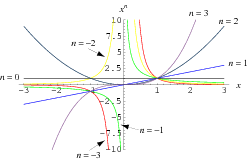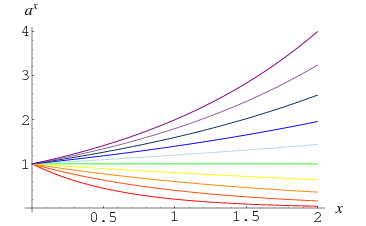

تاريخ الرياضيات

الاعداد و نظريتها

تاريخ التحليل

تار يخ الجبر

الهندسة و التبلوجي


الرياضيات في الحضارات المختلفة

العربية

اليونانية

البابلية

الصينية

المايا

المصرية

الهندية


الرياضيات المتقطعة

المنطق

اسس الرياضيات

فلسفة الرياضيات

مواضيع عامة في المنطق


الجبر

الجبر الخطي

الجبر المجرد

الجبر البولياني

مواضيع عامة في الجبر

الضبابية

نظرية المجموعات

نظرية الزمر

نظرية الحلقات والحقول

نظرية الاعداد

نظرية الفئات

حساب المتجهات

المتتاليات-المتسلسلات

المصفوفات و نظريتها

المثلثات


الهندسة

الهندسة المستوية

الهندسة غير المستوية

مواضيع عامة في الهندسة

التفاضل و التكامل


المعادلات التفاضلية و التكاملية

معادلات تفاضلية

معادلات تكاملية

مواضيع عامة في المعادلات


التحليل

التحليل العددي

التحليل العقدي

التحليل الدالي

مواضيع عامة في التحليل

التحليل الحقيقي

التبلوجيا

نظرية الالعاب

الاحتمالات و الاحصاء

نظرية التحكم

بحوث العمليات

نظرية الكم

الشفرات

الرياضيات التطبيقية

نظريات ومبرهنات


علماء الرياضيات

500AD

500-1499

1000to1499

1500to1599

1600to1649

1650to1699

1700to1749

1750to1779

1780to1799

1800to1819

1820to1829

1830to1839

1840to1849

1850to1859

1860to1864

1865to1869

1870to1874

1875to1879

1880to1884

1885to1889

1890to1894

1895to1899

1900to1904

1905to1909

1910to1914

1915to1919

1920to1924

1925to1929

1930to1939

1940to the present

علماء الرياضيات

الرياضيات في العلوم الاخرى

بحوث و اطاريح جامعية

هل تعلم

طرائق التدريس

الرياضيات العامة

نظرية البيان
Power
المؤلف:
Barbeau, E. J.
المصدر:
Power Play: A Country Walk through the Magical World of Numbers. Washington, DC: Math. Assoc. Amer., 1997.
الجزء والصفحة:
...
16-8-2019
3939
Power
 |
 |
A power is an exponent to which a given quantity is raised. The expression  is therefore known as "
is therefore known as " to the
to the  th power." A number of powers of
th power." A number of powers of  are plotted above (cf. Derbyshire 2004, pp. 68 and 73).
are plotted above (cf. Derbyshire 2004, pp. 68 and 73).
The power may be an integer, real number, or complex number. However, the power of a real number to a non-integer power is not necessarily itself a real number. For example,  is real only for
is real only for  .
.

A number other than 0 taken to the power 0 is defined to be 1, which follows from the limit
 |
(1) |
This fact is illustrated by the convergence of curves at  in the plot above, which shows
in the plot above, which shows  for
for  , 0.4, ..., 2.0. It can also be seen more intuitively by noting that repeatedly taking the square root of a number
, 0.4, ..., 2.0. It can also be seen more intuitively by noting that repeatedly taking the square root of a number  gives smaller and smaller numbers that approach one from above, while doing the same with a number between 0 and 1 gives larger and larger numbers that approach one from below. For
gives smaller and smaller numbers that approach one from above, while doing the same with a number between 0 and 1 gives larger and larger numbers that approach one from below. For  square roots, the total power taken is
square roots, the total power taken is  , which approaches 0 as
, which approaches 0 as  is large, giving
is large, giving  in the limit that
in the limit that  is large.
is large.
 (zero to the zeroth power) itself is undefined. The lack of a well-defined meaning for this quantity follows from the mutually contradictory facts that
(zero to the zeroth power) itself is undefined. The lack of a well-defined meaning for this quantity follows from the mutually contradictory facts that  is always 1, so
is always 1, so  should equal 1, but
should equal 1, but  is always 0 (for
is always 0 (for  ), so
), so  should equal 0. The choice of definition for
should equal 0. The choice of definition for  is usually defined to be indeterminate, although defining
is usually defined to be indeterminate, although defining  allows some formulas to be expressed simply (Knuth 1992; Knuth 1997, p. 57).
allows some formulas to be expressed simply (Knuth 1992; Knuth 1997, p. 57).
A number to the first power is, by definition, equal to itself, i.e.,
 |
(2) |
Similarly,
 |
(3) |
for any complex number  . It is therefore impressive that Captain Kirk (William Shatner) is able to detect one more heartbeat aboard the starship Enterprise than can be accounted for by amplifying an auditory sensor intensified by a factor of "1 to the fourth power" in the Season 1 Star Trek episode "Court Martial" (1967).
. It is therefore impressive that Captain Kirk (William Shatner) is able to detect one more heartbeat aboard the starship Enterprise than can be accounted for by amplifying an auditory sensor intensified by a factor of "1 to the fourth power" in the Season 1 Star Trek episode "Court Martial" (1967).
The rules for combining quantities containing powers are called the exponent laws, and the process of raising a base to a given power is known as exponentiation.
The derivative of  is given by
is given by
 |
(4) |
and the indefinite integral by
|
(5) |
The definite integral for  real is known as Cavalieri's quadrature formula and is given by
real is known as Cavalieri's quadrature formula and is given by
|
(6) |
While the simple equation
 |
(7) |
cannot be solved for  using traditional elementary functions, the solution can be given in terms of the Lambert W-function as
using traditional elementary functions, the solution can be given in terms of the Lambert W-function as
 |
(8) |
where  is the natural logarithm of
is the natural logarithm of  .
.
Similarly, the solution to
 |
(9) |
can be solved for  in terms of
in terms of  using the Lambert W-function. In the special case
using the Lambert W-function. In the special case  , in addition to the solutions
, in addition to the solutions  and
and  , a third solution is
, a third solution is
 |
 |
 |
(10) |
 |
 |
 |
(11) |
(OEIS A073084).
Special names given to various powers are listed in the following table.
| power | name |
 |
reciprocal |
 |
square root |
 |
cube root |
| 1 | identity function |
| 2 | squared |
| 3 | cubed |
Expressions of the form  are known as power towers.
are known as power towers.
The largest powers  which numbers
which numbers  , 2, 3, ... can be represented in the form
, 2, 3, ... can be represented in the form  are 1, 1, 1, 2, 1, 1, 1, 3, 2, 1, ... (OEIS A052409), with corresponding values of
are 1, 1, 1, 2, 1, 1, 1, 3, 2, 1, ... (OEIS A052409), with corresponding values of  given by 1, 2, 3, 2, 5, 6, 7, 2, 3, 10, ... (OEIS A052410).
given by 1, 2, 3, 2, 5, 6, 7, 2, 3, 10, ... (OEIS A052410).
A double binomial sum gives the power function as follows,
 |
(12) |
(K. MacMillan, pers. comm., Nov. 14, 2007).
The power sum of the first  positive integers is given by Faulhaber's formula,
positive integers is given by Faulhaber's formula,
 |
(13) |
where  is the Kronecker delta,
is the Kronecker delta,  is a binomial coefficient, and
is a binomial coefficient, and  is a Bernoulli number.
is a Bernoulli number.
Let  be the largest integer that is not the sum of distinct
be the largest integer that is not the sum of distinct  th powers of positive integers (Guy 1994). The first few values for
th powers of positive integers (Guy 1994). The first few values for  , 3, ... are 128, 12758, 5134240, 67898771, ... (OEIS A001661).
, 3, ... are 128, 12758, 5134240, 67898771, ... (OEIS A001661).
Catalan's conjecture (now a theorem) states that 8 and 9 ( and
and  ) are the only consecutive powers (excluding 0 and 1), i.e., the only solution to Catalan's Diophantine problem. In addition, Hyyrő and Makowski proved that there do not exist three consecutive powers (Ribenboim 1996).
) are the only consecutive powers (excluding 0 and 1), i.e., the only solution to Catalan's Diophantine problem. In addition, Hyyrő and Makowski proved that there do not exist three consecutive powers (Ribenboim 1996).
Very few numbers of the form  are prime (where composite powers
are prime (where composite powers  need not be considered, since
need not be considered, since  ). The only prime numbers of the form
). The only prime numbers of the form  for
for  and prime
and prime  correspond to
correspond to  and the Mersenne primes, i.e.,
and the Mersenne primes, i.e.,  ,
,  ,
,  , .... Other numbers of the form
, .... Other numbers of the form  equal
equal  . The only prime numbers of the form
. The only prime numbers of the form  for
for  and prime
and prime  correspond to
correspond to  with
with  , 2, 4, 6, 10, 14, 16, 20, 24, 26, ... (OEIS A005574). Other numbers of the form
, 2, 4, 6, 10, 14, 16, 20, 24, 26, ... (OEIS A005574). Other numbers of the form  equal
equal  .
.
There are no nontrivial solutions to the equation
 |
(14) |
for  (Guy 1994, p. 153).
(Guy 1994, p. 153).
REFERENCES:
Barbeau, E. J. Power Play: A Country Walk through the Magical World of Numbers. Washington, DC: Math. Assoc. Amer., 1997.
Beyer, W. H. "Laws of Exponents." CRC Standard Mathematical Tables, 28th ed. Boca Raton, FL: CRC Press, pp. 158 and 223, 1987.
Derbyshire, J. Prime Obsession: Bernhard Riemann and the Greatest Unsolved Problem in Mathematics. New York: Penguin, 2004.
Guy, R. K. "Diophantine Equations." Ch. D in Unsolved Problems in Number Theory, 2nd ed. New York: Springer-Verlag, pp. 137, 139-198, and 153-154, 1994.
Knuth, D. E. "Two Notes on Notation." Amer. Math. Monthly 99, 403-422, 1992.
Knuth, D. E. The Art of Computer Programming, Vol. 1: Fundamental Algorithms, 3rd ed. Reading, MA: Addison-Wesley, p. 57, 1997.
Ribenboim, P. "Catalan's Conjecture." Amer. Math. Monthly 103, 529-538, 1996.
Sloane, N. J. A. Sequences A001661/M5393, A005574/M1010, A052409, A052410, and A073084 in "The On-Line Encyclopedia of Integer Sequences."
Spanier, J. and Oldham, K. B. "The Integer Powers  and
and  " and "The Noninteger Powers
" and "The Noninteger Powers  ." Ch. 11 and 13 in An Atlas of Functions. Washington, DC: Hemisphere, pp. 83-90 and 99-106, 1987.
." Ch. 11 and 13 in An Atlas of Functions. Washington, DC: Hemisphere, pp. 83-90 and 99-106, 1987.
 الاكثر قراءة في التفاضل و التكامل
الاكثر قراءة في التفاضل و التكامل
 اخر الاخبار
اخر الاخبار
اخبار العتبة العباسية المقدسة

الآخبار الصحية















 قسم الشؤون الفكرية يصدر كتاباً يوثق تاريخ السدانة في العتبة العباسية المقدسة
قسم الشؤون الفكرية يصدر كتاباً يوثق تاريخ السدانة في العتبة العباسية المقدسة "المهمة".. إصدار قصصي يوثّق القصص الفائزة في مسابقة فتوى الدفاع المقدسة للقصة القصيرة
"المهمة".. إصدار قصصي يوثّق القصص الفائزة في مسابقة فتوى الدفاع المقدسة للقصة القصيرة (نوافذ).. إصدار أدبي يوثق القصص الفائزة في مسابقة الإمام العسكري (عليه السلام)
(نوافذ).. إصدار أدبي يوثق القصص الفائزة في مسابقة الإمام العسكري (عليه السلام)


















